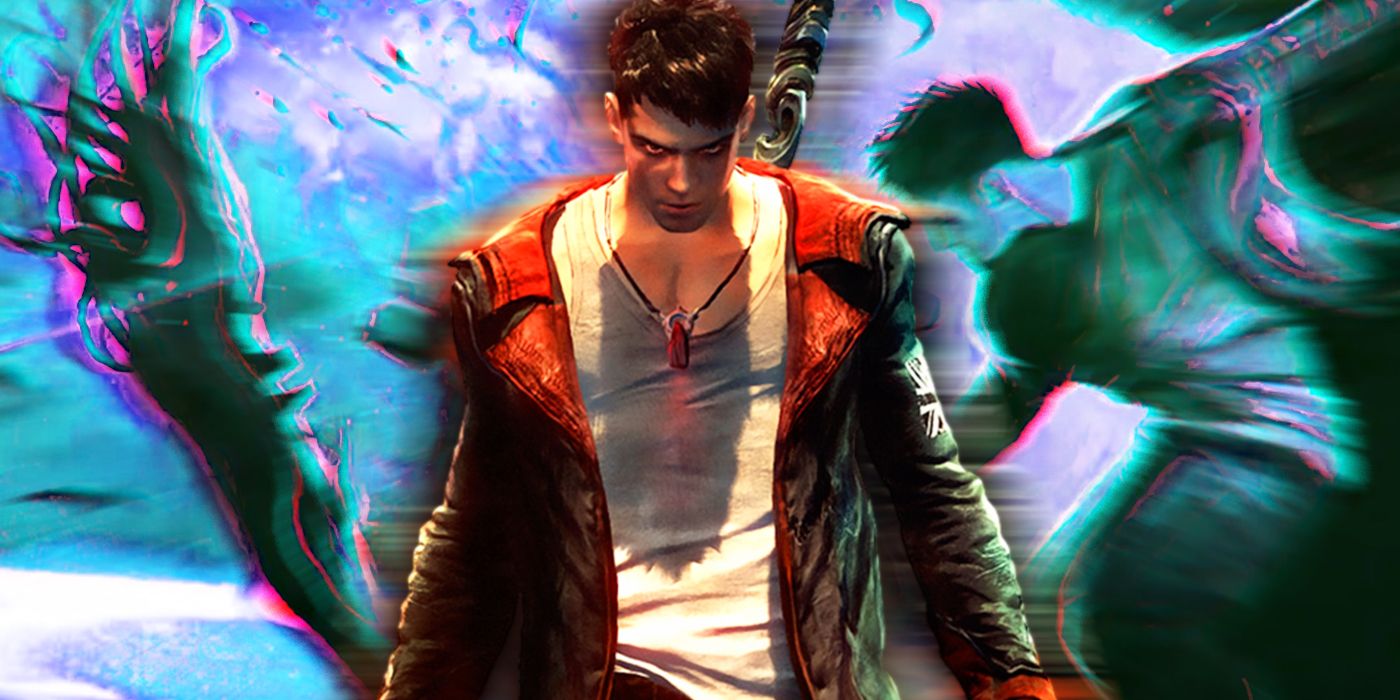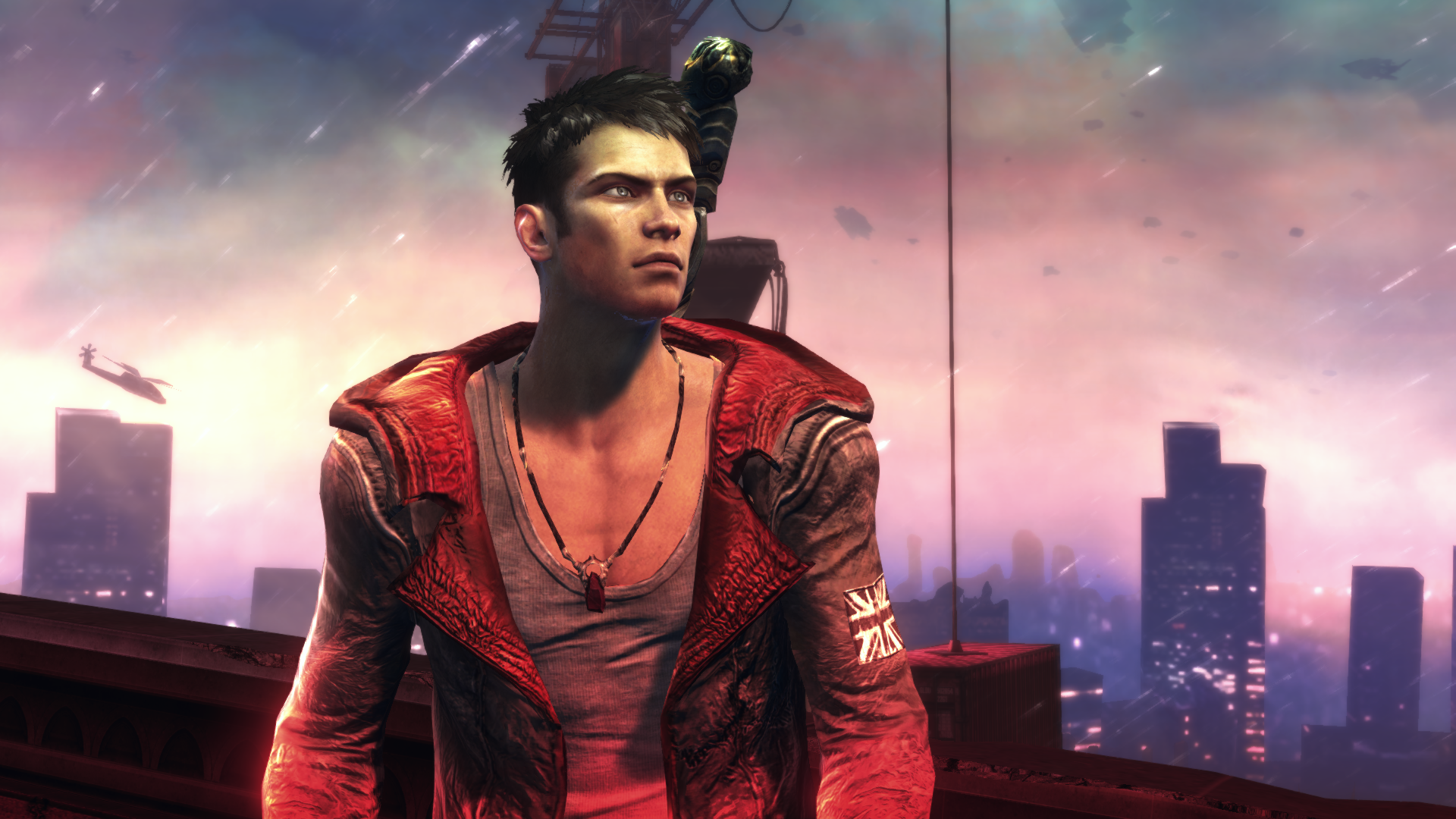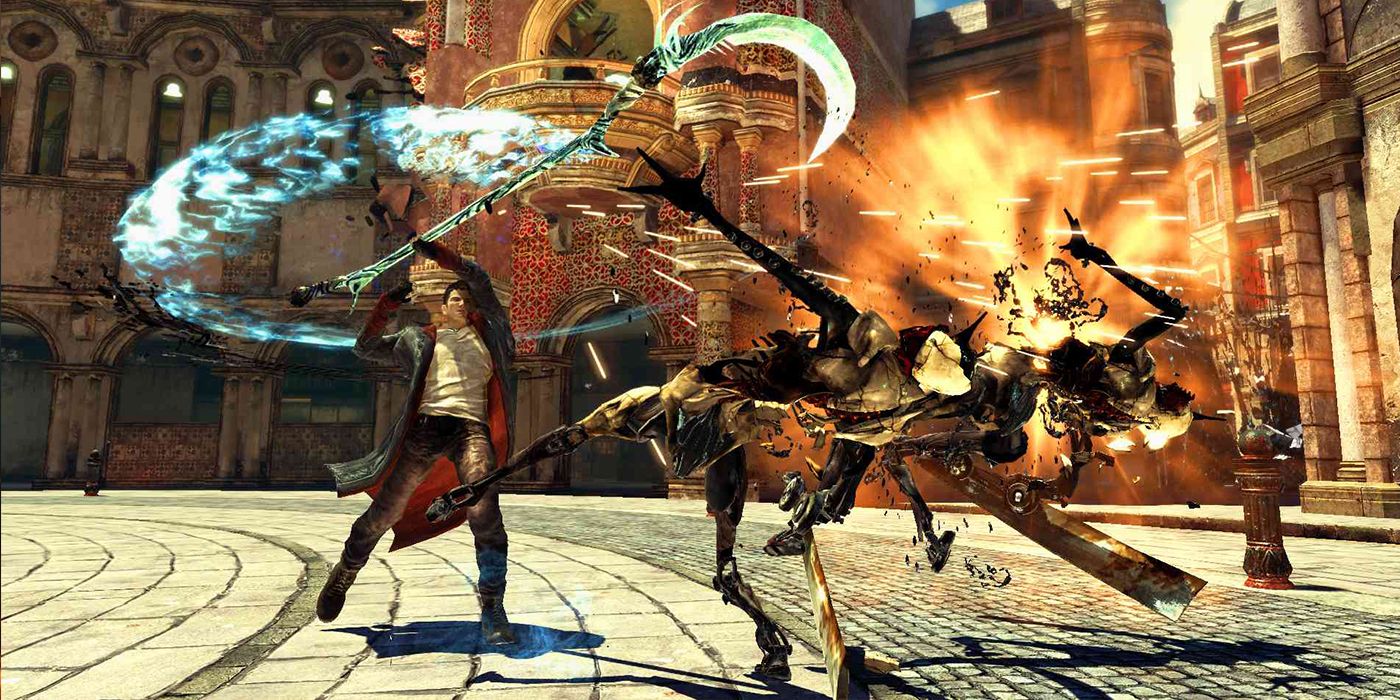During the 7th generation of consoles, Capcom suffered an identity crisis. With Japanese game sales declining, they passed their flagship franchises off to Western developers to capitalize on the ever-growing Western video game market. Most of these experiments were a disaster. While Dead Rising 2 was a smash hit, titles such as Bionic Commando, Lost Planet 2, and Dark Void flopped critically and commercially. Capcom's new western-based initiative's success rested on the shoulders of one experiment: DmC: Devil May Cry.
Helmed by Ninja Theory, DmC: Devil May Cry was an attempt to reboot the long-beloved action game series, but it's become a point of contention for fans. The Devil May Cry series had largely stuck to its guns for ten years, combining fast-paced, stylish combat with a cinematic presentation that never took itself too seriously. Its success led many other development studios to follow suit with games like Bayonetta, Metal Gear Rising and more refining the formula. With such an innovative, experimental and successful series under Ninja Theory's care, what could go wrong?
A lot, it turns out. The DmC reboot was surrounded by controversy long before its release thanks to bad PR, neglecting fan feedback and reports of poor framerates. After waves of controversy coming from every end of the spectrum, DmC: Devil May Cry released to generally positive critical reception and sold around two and a half million copies. Fans still found the edgier Dante to be tasteless compared to the original, and the controversies surrounding this game seemed ceaseless for years, yet the fires calmed down over time.
DmC: Devil May Cry feels like water under the bridge nowadays. Capcom realized it wasn't the game fans had wanted and eventually made up for that with a "Definitive Edition" re-release in 2015, which included all previous DLC and boosted framerates. Still, DmC as a franchise seemed dead in the water, with Capcom even going back to the well to make Devil May Cry 5. Time has not been the kindest to the ill-fated Devil May Cry reboot, and for understandable reasons. However, a lot is hiding under the surface that many people didn't recognize at the time.
Any seasoned Devil May Cry fan knows that DmC: Devil May Cry is quite easier than the previous entries of the series. Even on the standard "normal" difficulty, the player won't encounter much in terms of resistance. Even though the game is easier on the surface, it contains a surprising amount of variety in combat. Previous Devil May Cry games weren't afraid to throw players new weapons, but DmC: Devil May Cry was forward-thinking in making the use of these weapons as convenient as possible. Mapping all the weapons to the D-pad on a controller, the player could switch up combat with up to five melee and ranged weapons at any given time, stringing together insane combos with relative ease. DmC: Devil May Cry's weapon sandbox seems easy to use at first (and it certainly can be if you're not putting any thought into it), but the wealth of weapon upgrades and the sheer amount of available combo strings makes mastering DmC's weapon sandbox tough but fair.
A great weapon sandbox means nothing, though, unless there's a fun variety of enemies to use them on, and DmC: Devil May Cry has that in droves. Many may speak ill about the designs of enemies, but their functionality and variety crafts breakneck decision making from the player to utilize the best tools for any given situation. On top of fun standard enemies, DmC's boss battles are varied, too, asking the player to use the same amount of combat variety in normal situations, but with added cinematic flairs and a tougher challenge. No one boss or regular combat encounter feels entirely the same, which is a strength many action games still fail to capture, and that's thanks to the sheer amount of content in the game's mission-to-mission structure.
Earlier games in the DmC series may boast a better variety of level designs, but DmC: Devil May Cry gives the player plenty of tools to make level traversal feel better than ever. With a long array of grappling hooks, looser jump controls and a glide function, moving around in the Devil May Cry reboot is debatably the best the series has seen to this day. The sheer ease of movement leads to a greater sense of discovery, making secret hunting feel less tedious than earlier entries in the series.
Although fans got what they wanted at the end of the day with the amazing Devil May Cry 5, the reboot shouldn't be overlooked by action game fans. The story is messy, the tone is bitter, and the characters are flat-out bad, but the gameplay shines like a diamond in the rough. Gameplay is always king in the video game sphere, and although many of the aspects surrounding the gameplay in DmC: Devil May Cry are a mess, that shouldn't stop people from trying out this now-forgotten action game gem. Now more than ever, DmC: Devil May Cry is worth playing.



